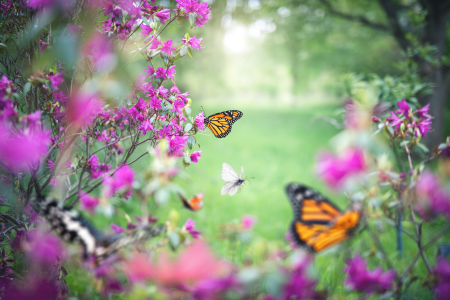Gardening Basics
- PCMG
- /
- Gardening Basics

Bed Preparation
Preparing the bed is an important step in the planting process. Your first consideration will be to remove vegetation currently growing in your area. Techniques for this activity are: sun solarization, chemical treatment, or the old fashioned method of digging them up. Each has some benefits and disadvantages.

Integrated Pest Management
Integrated pest management (IPM) is an environmentally responsible and economically practical method of controlling lawn and garden pests. It is a method that has been researched at Texas A&M.

Plant Disease
A good home gardener recognizes the symptoms of plant diseases quickly and takes steps to prevent or control them.

Soil Amendment
Compost
When living plants are allowed to decompose over time, the result is an incredibly rich and fertile soil amendment that we call compost. Fully composted organic material is the most beneficial element you can add to your soil.

Water-Wise Gardening
A landscape designed and maintained according to good horticultural principles that allow for a beautiful healthy landscape with minimal supplemental irrigation and little or not runoff from the landscape.

Earth-kind® Gardening
What is Earth-Kind Gardening?
Earth-Kind uses research-proven techniques to provide maximum gardening and landscape enjoyment while preserving and protecting our environment.

Landscape Design
A well-designed landscape gives pleasure to the owner, enhances a community, adds to the resale value of the property, and limits the environmental impact of care and maintenance.

Plant Selection
Plant selection can be an overwhelming task if you have not done your homework. Nurseries and Garden Centers are full of colorful, blooming plants just waiting for someone to grab them and take them home. The temptation is almost irresistible.

Soil Identification
Parker County may be known for its peaches and crape myrtles, but it’s not because of our fabulous soil. This County has some of the most frustrating and unusual soil combinations in the entire State. Because of this, it is important to assess your soil before you select plants for the landscape.
Gardening Tips
Jan 1 - Trim Oak Trees
Trim Oak trees for the next six weeks, lower occurrence of oak wilt carrier beetle
Feb 14 - Prune Rose Bushes
Prune bush roses by half, always pruning just above buds facing away from the centers of the plants.
Mar 16 - Last Avg. Killing Frost
Last average killing frost date is March 16th. Be sure tender plants are covered during cold nights.
Apr 1 - Fertilize Lawns after Third Mowing
Fertilize lawns with a 4-1-2 or 3-1-2 ratio fertilizer after the third mowing. Soil test may indicate you only need…
May 1 - Okra
Time to plant Okra and Peas
June 1 - Day Lilies
June is the month to select day lily varieties as they reach their peak bloom.
Aug 1 - Grass Planting
St. Augustine grass, Bermuda grass and other warm-season grasses should be planted early in the month. Do not let them…
Sep 1 - Leafy Vegetables
Plant leafy vegetables and root crops early in the month. Time to divide and reset daylilies, hollyhocks, irises, phlox, shasta…
Oct 1 - Wildflowers
Early this month, sow wildflowers into tilled garden soils be sure to keep them away from turfgrass.
Oct 15 - Garlic Cloves
Perfect time to plant garlic cloves for late June harvest.
Nov 1 - Killing Frost Info
Nov 1 Our first average killing frost date is November 12th –15th.
Dec 1 - Transplanting
Good time to transplant within the landscape or from nature into the landscape. Most other spring bulbs can be planted…
